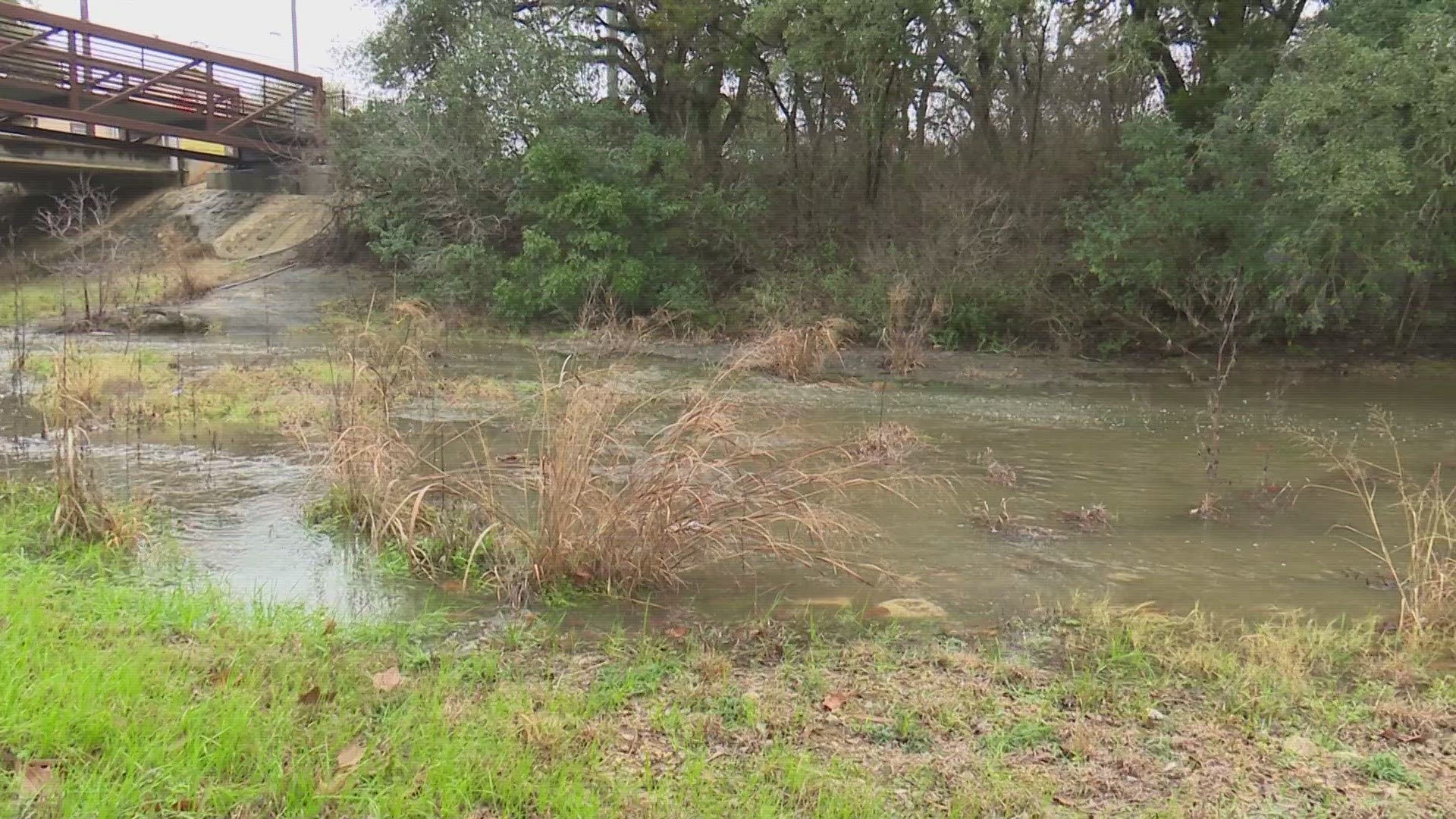HELOTES, Texas — A developer is one step closer to breaking ground on a project that will release millions of gallons of treated wastewater into Helotes Creek.
Lennar Homes, a national development company, plans to build 2,900 houses on 1,160 acres of property near Scenic Loop Road and Babcock Road.
To support the Guajolote Ranch development, Lennar Homes would need to build a wastewater plant.
“SAWS was concerned about the project, so they did not grant wastewater service because of concerns about the aquifer,” said Annalisa Peace, the executive director of the Greater Edwards Aquifer Alliance (GEAA). “They did grant water service because they were required to.”
Earlier this month, the executive director of the Texas Commission on Environmental Quality (TCEQ) released a decision letter saying the permit application “meets the requirements of applicable law.”
TCEQ commissioners will decide whether to approve, modify or deny the permit at an upcoming meeting.
If the permit is approved, Peace fears the project will impact health and habitat.
“There is nothing the size and scope of this project [in that area],” said Peace. “When it’s built up, they are talking about dumping a million gallons of treated sewer every day. This water, if you release it into Helotes Creek, is recharging the Edwards Aquifer. Even if it’s traveling seven miles, [the wastewater effluent] doesn’t clean itself up. You are basically polluting our aquifer.”
About 2 million people get their drinking water from the Edwards Aquifer.
At a public hearing last year, dozens of residents begged TCEQ commissioners to deny the permit.
The GEAA, San Antonio Metropolitan Health District, City of Helotes, City of Grey Forest and several state lawmakers have voiced opposition to the development.
A spokesperson for the TCEQ told KENS 5 no one was available for an interview. However, the spokesperson said the permit would have limits and conditions designed to protect human health and aquatic life. We are told the application process is still in progress, and those who commented on the application will be able to submit a request for reconsideration or a hearing by Feb. 12.
“It’s far away from drinking standards,” said Peace. “So, we will be contesting the permit.”
On Feb. 7, more than 100 landowners in the Grey Forest area packed into a meeting.
“It is not a done deal," said Ron Green, who chairs the GEAA board. "There are some that think this is already over with; that is not the case. Much remains to be seen and that’s why there is a good turnout at this meeting. The Greater Edwards Aquifer Alliance is helping in the effort to identify those people who may be able to be awarded status in a potential contested case hearing.”
Elizabeth Toepperwein, Lynette Munson and Jane Sams live near the proposed development site.
"The pipes will be discharging [wastewater] right near my fence," said Toepperwein. “We have been good stewards of the land for nearly 120 years. For seven generations.”
The family worries their new neighbor won't have the same priorities.
"I have a very shallow well, so I will probably be impacted," said Munson. "This will be devastating. The challenge with all of this is not just about the water, it really is about our way of life. It is not clean, drinkable water. It will have a smell, but we also have dirt banks. We are talking about erosion, it will tear the land up."
Michael Schick's property borders the Guajolote Ranch.
"It will be a nonstop stream of effluent," said Schick. "The greatest concern is that there will be a fountain of airborne pathogens that could be dangerous to the public. We are talking about forever chemicals. You don't have to swim in the water or drink the water to be at risk."
The decision letter states the TCEQ's goal is not to eliminate contamination, but to make sure contaminants don't pose a risk to human health or habitat. According to response 21, the TCEQ has "not investigated the potential effects of emerging contaminants, which includes pharmaceuticals and PFAS, in effluent."
"It would be like saying, 'We are still looking at asbestos and lead paint, but go ahead and put it in your house and we will wait until we find out it's dangerous,'" said Schick. "It will be too late. There is a difference between the letter of the law and the spirit of the law. In this case, they are not fulfilling the spirit of the law which is their mandate to protect the public from harm.”
Lennar Homes has not responded to our request for comment.

